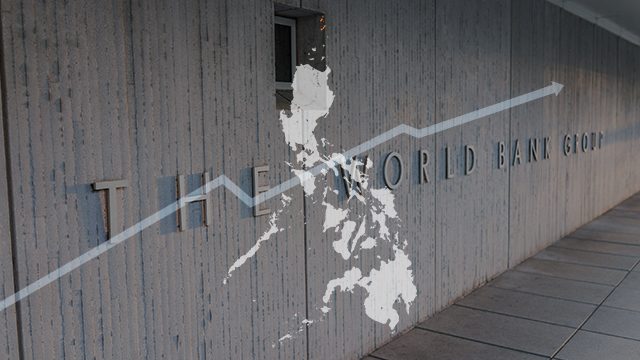SUMMARY
This is AI generated summarization, which may have errors. For context, always refer to the full article.

MANILA, Philippines – The World Bank Group expects the Philippine economy to continue growing at its current trajectory in the short-term, with strong public investment needed to raise that figure.
The multilateral lender maintained its projected 6.7% gross domestic product (GDP) growth for the country in 2018, while predicting the same growth rate for 2019, in its latest East Asia and the Pacific Economic Update released on Thursday, April 12.
The projections equal the country’s growth rate last year, and are lower than the government’s official target growth of between 7% and 8% for this year.
“Any growth above 6.7% would require vigorous investment in physical and human capital to push the economy beyond its current potential output. Investment growth hinges on the government’s ability to effectively and timely implement the Build, Build, Build public infrastructure program,” the World Bank said.
The Washington DC-based institution added that the country is expected to benefit from global recovery during 2018, though it noted that “export growth is expected to level off compared to its strong expansion in 2017.”
Imports, on the other hand, are projected to remain elevated due to high demand for intermediate and capital goods, which would further push the current account deficit which hit $3.065 billion back in February.
The World Bank also projected the country’s poverty rate to decline to 22.9% by the end of the year, but warned that “the pace of poverty reduction might drop slightly in the face of the increase in inflation.”
The latest report noted that “a faster-than-expected pace of policy rate normalization in advanced economies could further adversely impact capital flows and weaken the peso which in turn can pass through higher domestic prices, and increase inflationary pressure at a time when global commodity prices are rising.”
The World Bank added: “Monetary authority would need to watch for early overheating signs and if necessary adjust its accommodative monetary policy stance. In addition, the medium-term growth prospects hinge on the sustained pickup in both public and private investment.”
Regional growth
For the developing East Asia and the Pacific region as a whole, the World Bank expects growth to accelerate slightly to 6.3% in 2018, up from the initial projection of 6.2%.
China’s growth, meanwhile, is expected to slow to 6.5% in 2018 after posting higher than expected growth of 6.9% in 2017.
Excluding China, growth in the developing East Asia and the Pacific region is expected to remain stable in 2018 at 5.4%, reflecting continued robust domestic and external demand.
“While the region’s growth outlook is positive, there are challenges for policy makers in the short and medium term,” said Sudhir Shetty, World Bank chief economist for East Asia and the Pacific, at the report’s launch.
“Addressing these challenges will require measures to dampen the possible impacts of a more rapid pace of monetary policy tightening in advanced economies as well as to enhance longer-term growth prospects in the face of policy uncertainty, particularly around global trade,” he added. – Rappler.com
Add a comment
How does this make you feel?
There are no comments yet. Add your comment to start the conversation.